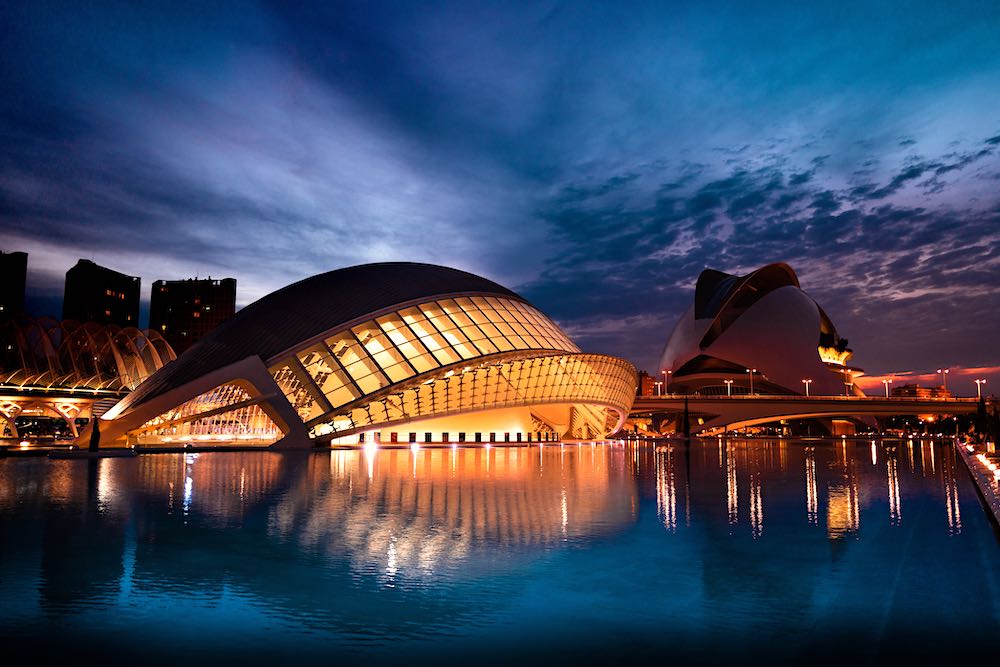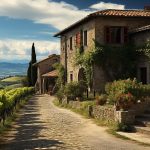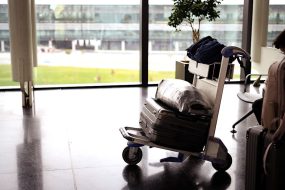
If you are planning a trip to Valencia, there are a number of things you can do. Valencia is home to the Valencia Cathedral, which is one of the best-known sights in the city. You can also visit the Plaza de la Reina, a picturesque square located in the old town. The plaza is surrounded by small flower gardens and gorgeous buildings. Many of the cafes here are a great place to sit and relax.
Places to visit in Valencia
There are many places to visit in Valencia, Spain. The city is known for its artistic and cultural heritage. This city has both ancient and modern influences, which make it a diverse place to visit. One of the standout attractions is the City of Arts and Sciences, which is a hub of scientific and cultural events. Valencia also boasts a number of beautiful cathedrals, bell-towers, and other architecture. The city is also a popular destination for design and art enthusiasts.
The City of Arts and Sciences is a huge cultural complex located at the end of the Jardin del Turia. The building is full of ultra-futuristic designs, and was completed in 1996. The City of Arts and Sciences has fountains, an IMAX theatre, and a science museum called Principe Felipe.
Valencia Cathedral is the city’s central cathedral, and is home to the agate Grail cup. The cathedral also features a museum and Goya paintings. The bell tower is an attraction in Valencia that can be climbed by tourists. Inside, you’ll find an image of the Blessed Virgin, which the city considers its patroness. The image is believed to keep evil spirits at bay.
Attractions
There are many exciting things to do in Valencia, Spain. Visitors can explore the historic center, climb the spiral staircases of ancient buildings, and view the centuries-old frescoes in temples and castles. They can also visit museums, and enjoy the local cuisine and nightlife. To see and do even more in Valencia, check out the Valencia Tourist Guide.
The city is home to one of the world’s most interesting bioparcs, or aquariums. This unique place aims to promote love for and preservation of nature. It is an atmospheric location where visitors can see a number of different species of animals living without cages or visible fences. Visitors can interact with the animals and feed them. Moreover, there are exhibitions and cafes available at the Bioparc.
The City of Arts and Sciences is another interesting attraction in Valencia. Located near the Cathedral, it is a pleasant place to explore. It contains several fascinating museums, including the Benlliure House-Museum and the Queen Sofia Palace of Arts.
Shopping
Shopping in Valencia can be a fun adventure for any traveler, and it offers a wide variety of stores for all tastes. The city has everything from big name brands to independent boutiques and markets. It also has something for every budget, from high-end fashion to vintage finds. Shopping in Valencia is a great way to find one-of-a-kind items.
The City Centre is ideal for shopping, and there are several street markets around the area as well. Local experts will advise you on the best places to buy souvenirs. In addition, the Valencia Corridor is dotted with many restaurants, cafes, and coffee shops. There’s something for everyone, including specialty coffee shops and gourmet eats.
Whether you’re looking for souvenirs or a new wall decoration, Valencia is a great place to shop. One of the city’s most famous streets for retail is Calle de las Cestas (music street). This street has a long tradition of being named after what the shops sell. For instance, many shops sell wicker baskets, which have been an important part of Spanish daily life for centuries. These baskets have been used to store bread, hide dirty washing, and even to carry shopping before plastic bags were invented.
Nightlife
Nightlife in Valencia is thriving throughout the city centre, especially in the Barrio del Carmen area. Here, you’ll find a wide variety of bars, pubs, and eateries. The streets around the Cathedral are also a lively area. A stroll through this area will make you appreciate the city’s cosmopolitan feel.
Valencia’s nightlife is varied and lasts all throughout the year. Weekends are busier, with many clubs and pubs staying open late until the early morning hours. While many Valencians enjoy a family-friendly atmosphere during the day, the vibrant nightlife scene comes alive in the city after midnight.
Terraza L’Umbracle, Valencia’s biggest nightclub, is located close to the city’s university zone and City of Arts & Sciences. It’s a great place to get into the party mood after a long day of sightseeing. With three music rooms, the club can accommodate up to two thousand people, and VIP areas are available.
Churches
Valencia has a great number of historical churches. Many of these religious buildings date back hundreds of years, and are an important part of the historical appeal of the city. The Catedral de Valencia, built in 1492, is perhaps the most impressive of Valencia’s churches. Work on this magnificent church spanned four centuries and is a prime example of Gothic architecture. Many other Valencia churches hold regular masses and welcome visitors of all faiths.
The cathedral contains a barrel vault in its main nave and groin vaults on either side. The barrel vault is one of the largest in Spain and is over 10 metres high. The cathedral also contains a number of masterfully-executed works of art, including a high altar and mural paintings. There are also coffered ceilings painted in imitation wood and exceptionally well-made lighting fixtures.
One of the city’s most beautiful churches is the Church of Sant Nicolau, which is located near the Cathedral. This Gothic church is one of Valencia’s most visited sites, and its interior features a spectacular fresco by Dionis Vidal. The fresco depicts the life of the patron saint of Valencia.
Beaches
Valencia has many excellent beaches, with pristine sand and clear water. Many of these beaches have been awarded the European Blue Flag, a prestigious award given only to the best beaches in Europe. This recognition is based on a strict set of requirements for each beach, including facilities, services, and the environment. There are also many activities available at Valencia’s beaches, including volleyball, beach rugby, and children’s play areas.
The beaches of Valencia are an easy drive from the city center. A 3.5-km-long promenade adorned with palm trees leads to the sea. Visitors can enjoy three separate beach sections, each with its own amenities and activities. The beachfront is dotted with restaurants, bars, and lodging options.
The city’s most popular beach, Las Arenas, offers a wide expanse of sand and is perfect for sunbathing, relaxing, and enjoying a variety of water sports. There are volleyball courts, sun loungers, and even bars to enjoy a cocktail. Active types can also participate in activities such as windsurfing and SUP (stand-up paddleboarding).
Museums
Museums in Valencia can be a unique way to learn more about the local culture. In addition to local history, visitors can also find exhibits from ancient times. The Valencian Museum of Ethnology, for example, is dedicated to exploring the origins of civilization. Its collections include human remains and items from the Roman and Middle Ages. It is also home to a library and document center.
The city’s major art museum is the Institut Valencia d’Art Modern, or IVAM. This striking building features excellent temporary exhibitions as well as a permanent collection by Catalan sculptor Julio Gonzalez. His work is sensitive, including his iron Masques. You can even catch a movie in this museum!
Another museum that is worth a visit is the San Pio V, one of the most important pictorial museums in Spain. The Gothic tables from the Fourteenth and fifteenth centuries are particularly noteworthy. You can also visit the Cultural Center La Beneficiencia, which was originally a school. It was renovated in 1955 and has several galleries and a library.
Cat house
Located on the Carrer del Museu, the Cat House in Valencia is a cute little place for stray cats to stay. Like most Valencian houses, it features Spanish tiled roofs, a little fountain, and cute windows and doors. There is even a side garden that features a single potted plant.
A legend states that the house was abandoned by its owner and the cats were left to live there. The Cat House can be found along the Carrer De Museu, a short distance from the El Carme Museum. Just after you pass two or three cafes and restaurants, you will find the entrance to the Cat House.
If you’re looking for a great place to relax in Valencia, consider taking a tour of the neighbourhood. It is an old town area with many hidden cafes and bars. The streets are also adorned with colorful street art. Also, just south of the train station, you can visit the Russafa district, a hipster area. There are lots of coffee shops in this area, as well as the La Finestra.








